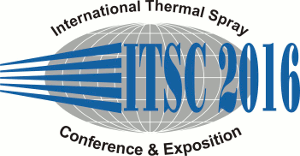
|
4622 |
|
Thursday, May 12, 2016, Room 3G 12:20 PM Equipment / Consumables & Powders, Wires, Suspensions |
|
An Investigation of the corrosion and fouling resistance of ZnNi/Cr2O3-TiO2-CuO/PTFE composite ceramic coatings |
|
Li Quingyu* / State Key Laboratory of Advanced Technology for Materials Synthesis and Processing, China Xu Dong Cheng/ State Key Laboratory of Advanced Technology for Materials Synthesis and Processing, China Qi Zhang/ State Key Laboratory of Advanced Technology for Materials Synthesis and Processing, China Wei Ping Ye/ Schoole of Materials science and Engineering, China Jie Min/ State Key Laboratory of Advanced Technology for Materials Synthesis and Processing, China Jie Min/ State Key Laboratory of Advanced Technology for Materials Synthesis and Processing, China Sheng Peng/ State Key Laboratory of Advanced Technology for Materials Synthesis and Processing, China |
|
In this study, ZnNi/Cr2O3-TiO2-CuO/PTFE composite coatings were deposited on stainless steel (SS) substrates by Atmospheric Plasma Spraying (APS), aiming at possessing the capability of wear, corrosion and stain resistance. The microstructures and phases of the composite coatings were revealed by X-Ray Diffraction (XRD) and Scanning Electron Microscopy (SEM). The corrosion resistance of the coatings was characterized by Neutral Salt Spray (NSS) test, polarization curve, weightlessness experiment and immersion corrosion test. The fouling resistance of the coatings was investigated by wear test under water-lubrication condition. The reciprocating parts with the coatings were relatively intact after 5000h immersion test in realistic ocean environment. The research revealed that the cyclical changes of the coatings weight were influenced by the weight fluctuate of dissolution of oxide film and the accumulation of secondary products. Furthermore, the PTFE sealed the porosity of the coatings surface which applied the surface of coatings less micro-porosity. With sealing reagent and TiO2 particle penetrating into the pores, leading to the decline of porosity in the coatings, the low-porosity made the composite ceramic coatings effective in reducing and retarding the corrosion and wear of reciprocating parts. |